
Story Time - The Yummy Alphabet Book
Activity 1: Herba-licious Looms
In this episode of Story Time, Kelly shared that her special superpower was using plants to dye or color fabric and yarn. She showed us a square textile that she made with yarn that was dyed with different plant materials, from acacia flowers to onion skins. How does a single thread of yarn become a solid square? By weaving threads on a loom. Kelly wove horizontal rows of yarn (known as “weft”) across vertical rows of yarn (known as “warp”) that were held tightly within a frame.
You can make your own version of a loom and weave a garden tapestry with herbs, a piece of cardboard, and elastics. There are a variety of herbs at the grocery store or you can use plants that you like from around your home. If you use fragrant herbs, such as sage or mint, your creation will smell “herba-licious.”
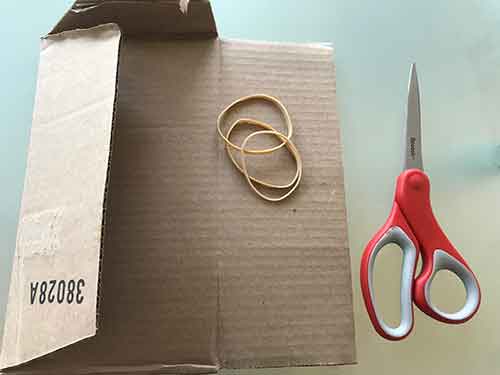
1. Find a large flat surface, such as a table or a countertop, where you can do this project. Next, find a cardboard box and cut a square from it. This will be the base of your cardboard loom.
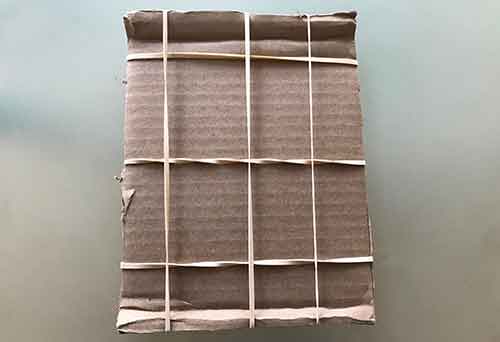
2. Go on a quest to find all of the elastics that may be hidden in drawers around your home. Any elastic will do. Stretch your elastics over your square, from top to bottom and from side to side. Your cardboard should look like it has an elastic grid on top of it.
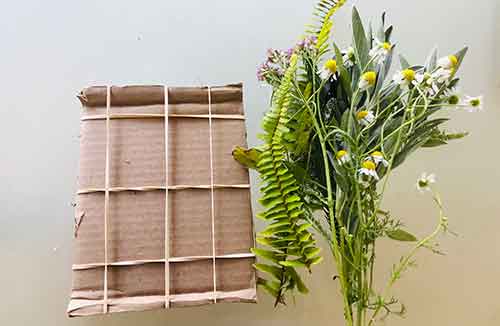
3. Take a walk in or around your home to find and collect plants to weave with your loom. Choose plants with long stems that you can weave over and under the elastics so that they stay in place. You can also use herbs from the grocery store.
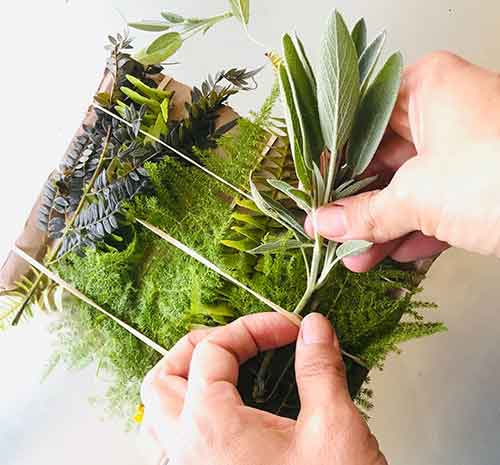
4. Build layers in your creation, and experiment with different placements for each plant or flower. What combinations do you like best?
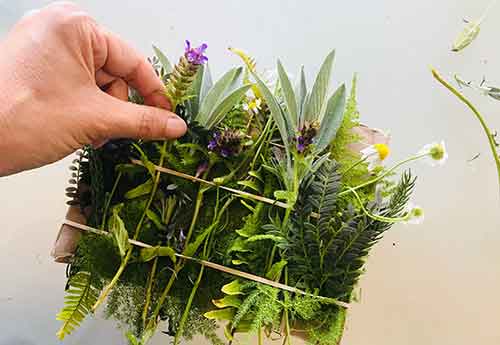
5. Add flowers (if you have them) to your top layer for some extra color. Enjoy getting a whiff of your woven creation. Now that’s “herba-licious!”
Activity 2: Presto! It’s Zero-Waste Pesto
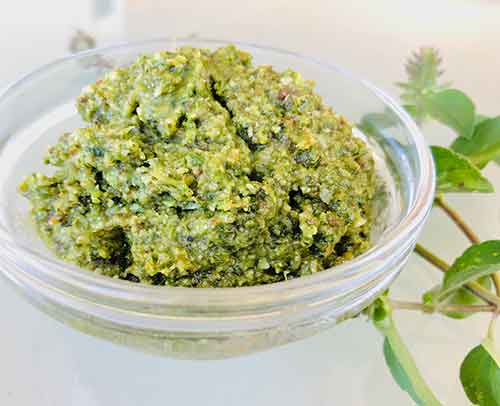
Kelly told us about all the great ways to use basil, one of which was pesto. You can use pesto in so many different ways: on sandwiches, on noodles, or as a pizza or veggie sauce. Here’s a zero-waste pesto recipe that you can use even if you don’t have basil. Recipe courtesy of Bob Blumer, The Kitchen Magician.
Ingredients
2 cups (in total) of leftover fresh celery tops, radish tops, fennel fronds, carrot tops, parsley or cilantro stems, and/or stemmed fresh herbs such as basil—or a mixture of them all.
4 tablespoons olive or vegetable oil (ideally the leftover oil from a jar of sun-dried tomatoes, artichoke hearts, or olives stored in oil)
2 garlic cloves, rough chopped
1⁄4 cup peanuts, or 2 tablespoons peanut butter, or ½ cup left-over rock-hard stale bread*
4 ounces of whatever leftover hard cheese you have (parmesan, aged gouda...)
a pinch of salt and pepper
Add all ingredients to a food processor or blender. Blend. If necessary, add a tablespoon or two of water to facilitate the blending process.
Yield: approximately 1 cup pesto
* use breadcrumbs, or dry leftover bread by leaving it out for 2 days or baking it in a 200°F oven for an hour.